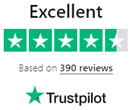Debt is one of the hardest struggles that many businesses face. With unexpected expenses, market changes, or poor management decisions, it’s all too easy for even promising ventures to fall under the weight of growing balances owed. As the payments pile up and creditors start calling, it can feel nearly impossible to see a path to stability again.
However, with care, creativity, and guidance from peers, relief is possible. As stress-inducing as overwhelming debt may feel, successful companies nationwide have navigated similar troubled waters and emerged on the other side. The key often lies not in dramatic changes but in incremental shifts – and a willingness to learn from those who’ve traveled the road ahead.
In this post, we’ll explore real-world strategies industry leaders employ for debt relief, prioritize paying off high-interest obligations, minimize unnecessary costs, and pivot operations as needed to boost cash flow and regain control of finances.
Identifying and Prioritizing Debts
The first step towards addressing business debt is to understand where you stand. It’s important to examine your debts by identifying and categorizing them carefully. According to Forbes, identifying and categorizing your debts is crucial since it helps you prioritize which ones to address first.
For example, some debts may have higher interest rates than others, while others may have different payment terms. This information can help you better understand which debts are more pressing and require immediate attention. Once you’ve identified your debts, developing a plan of action is easier as you move forward.
Prioritizing your debts is also crucial. NowCFO suggests that prioritizing your debts can help you create a plan to pay them back efficiently. Prioritizing your debts means considering several factors, such as interest rates, payment terms, and consequences of non-payment.
It’s also important to prioritize those creditors who can significantly impact your business, such as those whose contracts could be terminated. Negotiating payment terms and schedule plans with your creditors before things get out of hand is wise.
Avoiding Additional Debt
Managing business debt is a crucial aspect of a company’s financial health. While taking on new debts to finance business operations or expansion may be tempting, it’s crucial to avoid doing so whenever possible. Industry leaders have learned this lesson the hard way and have developed effective strategies for managing existing debts without incurring additional ones.
By carefully analyzing cash flow and profit margins, businesses can identify areas where they can cut costs and increase revenue to meet their financial obligations. Furthermore, exploring alternative financing options, such as leasing or factoring, can be viable for companies looking to manage their debts without taking on additional financial burdens.
Employing these strategies will help businesses avoid the dangers of excessive debt and ensure greater long-term financial stability.
Renegotiating Payments and Interest Rates
Another effective strategy is to renegotiate payment terms and interest rates with your creditors. This can help you in the short term by reducing your monthly payments and in the long term by lowering the overall amount you owe. Industry leaders have shared valuable insights on how to approach creditors for renegotiations.
They recommend being proactive, honest, and clear about your financial situation and proposed terms. Remember, creditors want to avoid default as much as you do, so they may be willing to work with you to find a mutually beneficial solution. If you’re struggling with business debt, consider taking the first step towards relief by exploring renegotiation options.
Debt Consolidation and Refinancing
When it comes to managing business debt, debt consolidation, and refinancing have proven to be effective strategies for many companies. Debt consolidation involves taking out a single loan to pay off multiple debts, simplifying the repayment process, and potentially reducing interest rates.
Alternatively, refinancing involves replacing an existing loan with a new one with better terms and conditions, potentially reducing interest rates or extending the payment period. By implementing these methods, some businesses have reduced their monthly payments and gained greater control over their debt.
Successful case studies exist across various industries, demonstrating that tailored strategies and a willingness to explore alternative options can help businesses overcome financial challenges.
Creating a New Business Budget
The importance of budgeting in managing business debt is undeniable. Effective budgeting allows business owners to monitor the financial health of their company, analyze where the money goes, identify expenses that can be cut, and allocate resources to debt reduction. Creating a new business budget can be daunting, but it is crucial for financial control and debt relief.
Guidelines for creating a budget that helps reduce debt include assessing current cash flow and income, tracking expenses, prioritizing debt payments, and making adjustments as needed. Industry leaders have learned through experience that a well-planned budget is essential for staying afloat in tough times and that being proactive in managing finances is key to achieving long-term success.
Debt Settlement
Debt settlement involves negotiating with creditors to come to a reduced settlement amount that can be paid off in a lump sum or through a payment plan. However, before diving into negotiations, it’s important to have a solid understanding of your financial situation and to devise a clear strategy for approaching creditors.
Industry leaders who have successfully employed debt settlement strategies suggest reaching out to creditors early on and presenting a realistic repayment plan. They also advise being prepared to negotiate and potentially compromise the settlement amount. With careful planning and effective communication, debt settlement can be a viable strategy for lowering business debt.
Conclusion
In conclusion, managing business debt can be challenging, but with the right strategies and mindset, it is possible to overcome financial hurdles and succeed. We have learned from industry leaders that effective communication, budgeting, and prioritizing payments can significantly impact the outcome of debt management.
As business owners, it is important to remain proactive and stay informed about your financial status. It is also crucial to seek professional advice and learn from others who have faced similar situations. Remember, tackling debt requires patience, resilience, and determination – qualities that all successful entrepreneurs possess.




